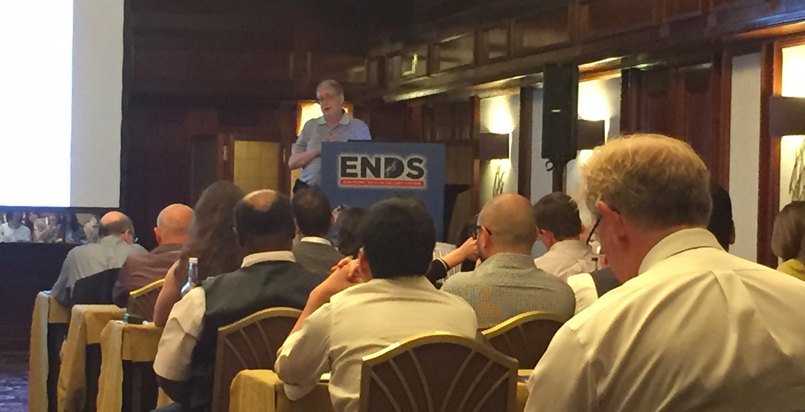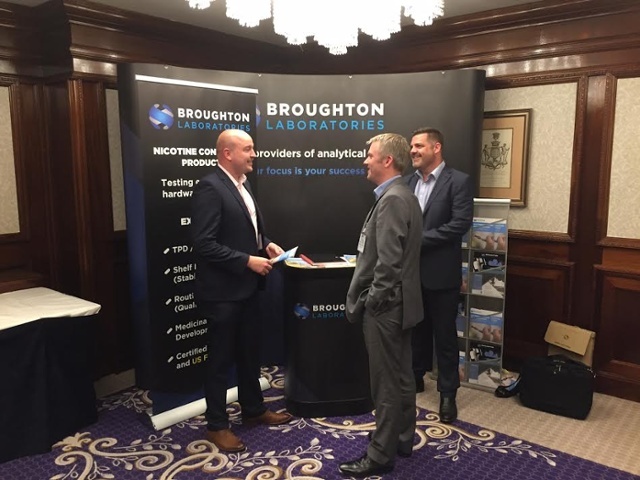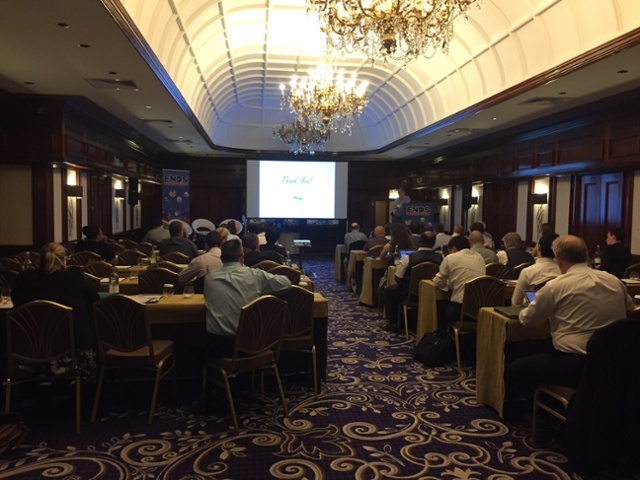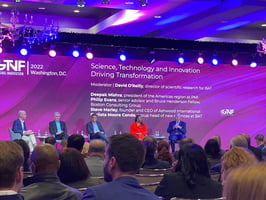Increasing patient access to cannabis-based medicines
ENDS 2017
Nicotine

Jun 15, 2017 | Published by Chris Allen
Nicotine
The key strapline echoed by many key figures within the industry was ‘the FDA regulations are here to stay, and we just have to deal with it’.
The presentations highlighted that huge leaps in scientific advancement had been made and many companies were already well underway with generating data for their Pre-Market Tobacco Applications (PMTA), either in-house or utilising experience CRO’s such as Broughton.

Confusion still reigns regarding the PMTA and whether the regulations are biased towards tobacco or pharmaceutical regulations, or indeed a combination of both. The introduction of standardised methodology was preferred by many but the data generated from collaborative studies highlighted that even with standardised ‘puffing’ regimes and detection methods, a significant degree of variation was observed. Perhaps this highlighted variation in devices or the sampling equipment utilised, but it is clear that further work is required in order to harmonise sampling instrumentation and select a consistent device for such trials. Standardised methods can add value, but only if the analytical facility can validate their ability to perform correctly and the methods have suitable limits of quantification (LOQ’s) for the analytes of concern. Initial toxicological assessments and low level of detections specified by our clients (e.g. for carbonyl compounds) indicate that many of the current ISO methods utilised for combustible products cannot simply be transferred to ENDS products. In these cases, more modern and sensitive techniques (such as LCMS/MS) are essential.
Scientifically sound and pragmatic approaches to the PMTA are being taken by many. Willie McKinnie, of Altria Client Services, presented their risk based approach and research to negate the need for testing combustion related compounds in ENDS. An approach that appears well founded but only time will tell if the FDA accept the use of sound science in the application process.
Meanwhile, back in the UK, Beryl Keely of the MHRA discussed the challenges of the unexpected volume of TPD notifications made. Despite these challenges it highlighted how the UK are leading the way in the EU with regards to interpreting, communicating and implementing EU TPD Article 20. With the UK showing the highest uptake of ENDS/NCP and the sharpest decrease in smokers within the EU, this data surely isn’t coincidental and should set a positive example to other countries.
The MHRA are also clearly welcoming companies to take their products through the Medicinal route, with advantages such as the ability to advertise, exceed the maximum nicotine content stipulated by the TPD and make the product available on prescription. Updated guidance has been provided by the MHRA and more is to follow shortly.
It’s without debate that industry, regulators and the public are in agreement that ENDS/NCP are significantly safer than smoking, but still not completely safe. The regulatory bodies either side of the Atlantic clearly sit in two very different camps with regards to this matter, i.e. the light touch which allows a safer alternative to smoking or the heavy touch to prove that your product is safe and won’t lead non-smokers being attracted to ENDS.

The event spent a significant amount of time on the importance of, and critical requirements for, Extractables and Leachables testing. Following a presentation from Charles Ducker of Eurofins, the Chairman of the event, Dan Norwood, gave an interesting presentation on what the ENDS industry can learn from the experiences of the pharmaceutical industry and the importance of control of your supply chain.
To ensure a balanced event, Marketing led topics were also covered with David McLaughlin of Elucid8 giving his opinion that the industry has a long way to go before the design and development of Vape devices are optimised from a consumer experience perspective. The tricky subject of what is acceptable when promoting ENDS and the importance that it is not perceived that such activities are encouraging initiators was covered by Jo Davis of CAP.
At the end of an interesting 2 days the conclusion has to be that this is an extremely fast moving and evolving industry and that regulation and increased accountability is inevitable. Following the regulatory requirements surely the next stage is regular batch release testing. At the end of the day, without testing how do we know that these products are safe for public consumption?



